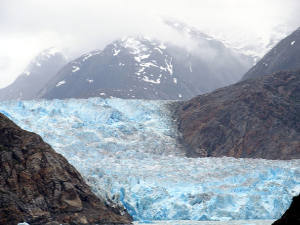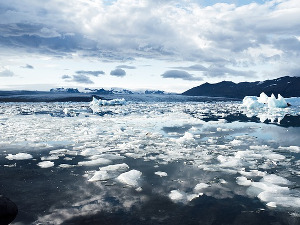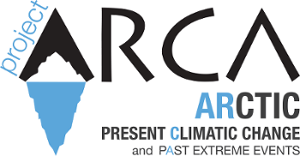WP1 - The integrated atmosphere-hydrosphere-cryosphere system
Wednesday, 11 November 2015 11:02
Task 1.1 - Radiation and energy budgets and fluxes of mass, heat and momentum at the air-snow-ground interface
Specific activities
Radiation energy budgets, Arctic ABL dynamics, role of clouds, water vapor, aerosols and albedo, influence of the chemical composition on the radiative balance in the strato-mesosphere, development of parameterizations for climate models at the regional scale.
Institution: CNR (CNR-ISAC, CNR-IIA, CNR-IBAF, CNR-IDPA) - INGV
Expected results
- Meteo-climate peculiarities of Kongsfjorden, in particular in periods of seasonal transition: characterization, cataloguing.
- Parameterization of the exchange processes between the surface and the atmosphere, especially in reference to radiation and energy budgets.
- Integration of information and data acquired from the scientific platforms in the information system.
- Construction of the catalogue of measures.
Task 1.2 – Oceanographic observations and processes at atmosphere-hydrosphere-cryosphere interfaces
Specific activities
Circulation, dispersion and sedimentation processes, ocean exchanges, at airsea fluxes in the fjord reconstruction of recent history by sedimentary deposits (100-200 years).
Institution: CNR - (CNR-ISMAR, CNR-ISAC, CNR-IAMC, CNR-ISSIA)
Expected results
- Hydrological survey and oceanographic observing site maintenance.
- Water and carbon fluxes at the interfaces of the
Kongsfjorden.
- Map of the thicknesses of modern sediment in the inner fjord.
WP2 - Evolution and Dynamics of the glacial cap and outlet glaciers in Greenland
Wednesday, 11 November 2015 11:02
WP2 - Evolution and Dynamics of the glacial cap and outlet glaciers in Greenland
Specific activities
Greenland outlet glaciers monitoring observed by the analysis of seismic data collected through the regional seismic network Greenland Ice Sheet Monitoring Network (GLISN) trying also to find out correspondence in the glacier tongue evolution derived by the observation of satellite images. By studying the long period seismic signals at stations located at the mouth of large fjords (e.g. ILULI, NUUG, KULLO), we identify major calving events through the detection of the ground flexure in response to seiche waves generated by iceberg detachments. For the time spanning the period between 2010-2014, we fill out calving-events catalogue that can be useful for the estimation of spatial and temporal variations in volume of ice loss at major active fronts in Greenland. Seismic data were inverted using Radio Echo Sounding (RES) reliable 3D models of the glacier outlet areas trying to discriminate the physical condition of the ice-bedrock interfaces.
Expected results
- Maps of wet/dry bedrock-ice interface in some areas of Greenland.
- Catalogue of the most significant calving events for some of major glaciers.
- Theoretical model of the seismic signal produced by the iceberg-fjord interaction.
WP3 - Reconstruction of extreme meltwater events
Wednesday, 11 November 2015 11:02
WP3 - Reconstruction of extreme meltwater events
Specific activities
Dispersal mechanisms, age and recurrence of meltwater processes, quantification of sediment supplied based on lithological and geophysical data in Storfjorden and Kveithola; studies of magnetic and paleomagnetic properties of sediment cores, speleothem-based paleoclimate reconstructions.
Expected results
- CORIBAR drilling campaign in Storfjorden and data analysis.
- High-resolution reference paleoclimate record based on speleothems.
WP4 - Conceptual model and distributed system for the management, use and dissemination of data
Wednesday, 11 November 2015 11:02
WP4 - Conceptual model and distributed system for the management, use and dissemination of data
Specific activities
Study of processes and parameters driving fresh water and sediment supply. Comparisons on a regional scale with other glacial systems (ice streams, outlet glaciers).
Definition of the distributed network architecture, deployment nodes.
Institution: CNR (CNR-ISAC, CNR-ISMAR, CNR-DTA) - INGV - OGS
Expected results
- Summary obtained through the results of WPs 1-3 and development of conceptual models for the study of various phenomena and processes.
- Integration of complementary expertizes by participant institutions, establishment of an interdisciplinary multi-institution team .
- Collaboration with international partners involved in the CORIBAR experiment.
- Implementation of a distributed structure based on the brokering approach concept, with nodes managed by different participants and a central infrastructure at the
CNR.




